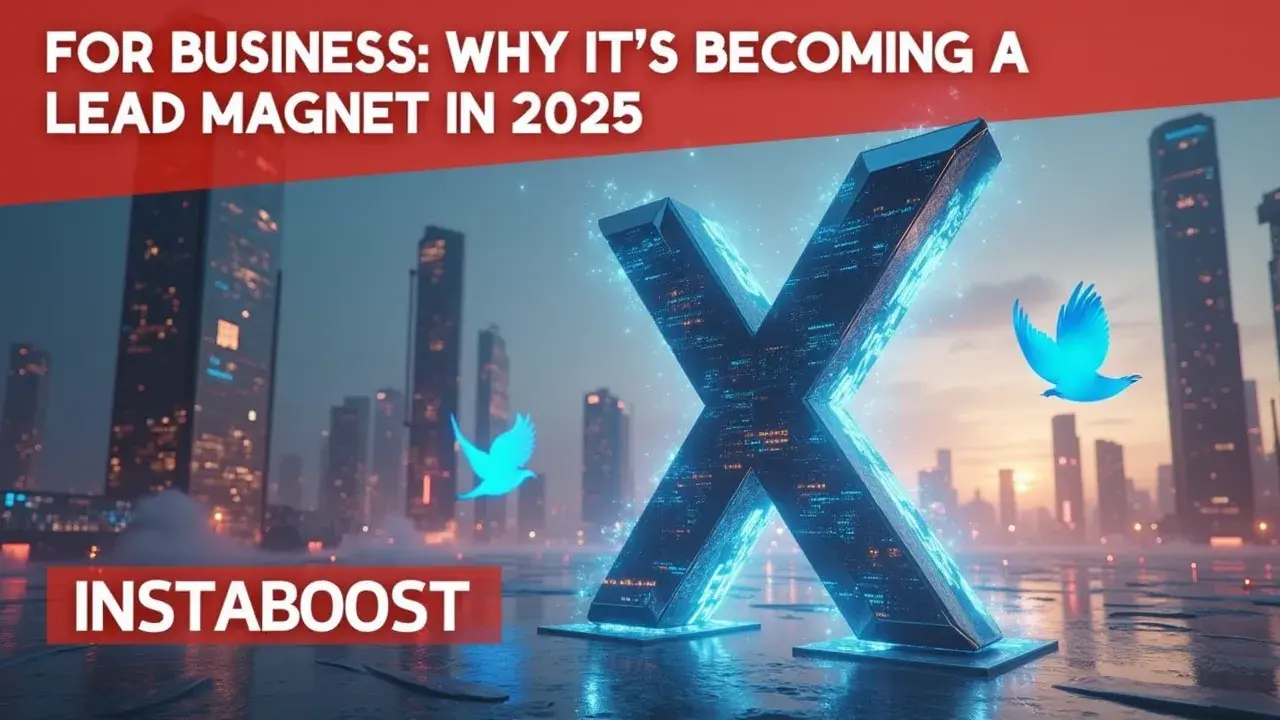X (Twitter) For Business: Why It’s Becoming A Lead Magnet In 2025?
X (Twitter) is emerging as a powerful channel for business lead generation in 2025. Trends, tools, and strategies on the platform are aligning to help modern brands attract, engage, and convert interested audiences. Results depend on matching the right features to clear objectives and maintaining consistent, relevant content tailored to target segments. Focusing on measurable engagement and iterative optimization creates a smart path to sustained lead quality and volume.
X’s Quiet Transformation Into a Business Lead Engine
X – what used to be called Twitter – doesn’t really feel like the old nonstop feed of quick posts anymore. Going into 2025, it’s turning into a spot where brands can actually find people who care about what they’re offering, whether it’s business or consumer stuff.
The algorithms seem to care less about how many followers you have and more about which posts get real replies, so it’s not just about chasing numbers. That’s helped companies – everyone from smaller software startups to big global brands – start building actual communities, with people who want to talk instead of just being advertised to.
The algorithms seem to care less about how many followers you have and more about which posts get real replies, so it’s not just about chasing numbers. That’s helped companies – everyone from smaller software startups to big global brands – start building actual communities, with people who want to talk instead of just being advertised to.
Conversations stay pretty open, and it’s not too hard for people to jump in, ask something, or give feedback without feeling like they’re just being sold to. Brands can share what they know, work through questions in public, and maybe even start building trust before ever mentioning a sale.
Teams are passing around things like X popularity kits as they try to adjust to how things work now. With new community features and better search, X isn’t just a place for announcements anymore – it’s more like an open space, where you can actually find people worth talking to.
Companies paying attention to these shifts will probably get more out of it, whether that’s making new connections or finding leads. The old way of just posting and hoping for the best doesn’t quite fit like it used to...
Teams are passing around things like X popularity kits as they try to adjust to how things work now. With new community features and better search, X isn’t just a place for announcements anymore – it’s more like an open space, where you can actually find people worth talking to.
Companies paying attention to these shifts will probably get more out of it, whether that’s making new connections or finding leads. The old way of just posting and hoping for the best doesn’t quite fit like it used to...

Why “X” Now Commands Real Attention From Decision-Makers
These days, if you want to actually get ahead, it helps to pay attention to what’s going on beneath the obvious stuff. Take X for business. It isn’t really this fad that everyone’s hyping up – it’s become a place where real conversations between businesses are happening, but not in the way people usually talk about on social media.
Instead of focusing on likes or how many impressions a post gets, you’ll notice something different: founders and decision-makers using X to share what they’re working on, asking straightforward questions, and reaching out directly to people at other companies. The way the algorithm works now, it pulls up replies and back-and-forth discussions that have a bit more substance, so it’s actually a lot easier to see who’s giving useful input and who’s just there for attention. When a founder walks through the details of a campaign right on their feed, or when someone in B2B sales is asking for recommendations on a tool, it’s pretty clear how lead generation is changing.
It’s more open and happens in real time, and you can actually see who knows their stuff. X isn’t about making the most noise anymore; it’s more about showing your work – what you’re thinking, what you’re building – out in the open where anyone interested can follow along. And honestly, the number of followers for X profiles has started to matter less than the quality of the conversations happening.
So for people running companies or leading teams, it really turns into a space to prove what you know, and to actually connect with people who care about the same things. If you want to know who people in your industry actually trust, or what’s getting attention right now, watching these conversations on X has turned into one of the clearer ways to spot who has influence, and where new possibilities might be opening up.
Strategic Positioning: How Brands Are Winning on X
When you look at what actually works on X these days, it’s clear that just jumping in without a plan doesn’t do much. It’s not really about having the biggest following or racking up likes anymore. What sets brands apart now is being straightforward about why they’re on X and who they want to reach. The ones seeing real results are paying attention to how things are shifting on the platform – they notice where real conversations are happening and make a point to join them with something specific to add. Instead of blasting out generic promotions, they spend time figuring out what people in their field actually care about, keeping an eye on which decision-makers are active, and waiting for natural moments to take part in those discussions.
You see them sharing real case studies, asking pointed questions to other industry folks, and replying to posts that make sense for their work. Over time, this kind of engagement builds trust, and lately, it also seems to work with X’s algorithm. Some even use things like advanced search, custom lists, or occasionally buy tweet boost on X, to find smaller groups where they can actually talk to people who are interested in what they offer. Everything they do ties back to a plan – whether that’s getting their name out there, building up referrals, or quietly moving someone toward a real conversation. As X keeps shifting more toward business, it’s these steady, thoughtful approaches that are starting to matter most.
Resisting the Urge to Chase Every Trend
It’s easy to feel like you have to keep up with the pace on X, posting and responding all the time so you don’t fall behind. The real pressure isn’t some abstract algorithm, but the worry that your business will get lost if you aren’t visible every day. But lately, if you look at the companies that are actually moving the needle as 2025 approaches, they’re not the ones filling the feed just to check a box.
They’re careful about when and why they show up. Some leaders are starting to realize that you don’t have to jump into every trending topic or try to catch every spike in activity. When X is actually working for a business – really bringing in leads – it usually comes down to a more deliberate approach. These brands are comfortable taking a step back, watching how conversations develop, and rethinking how they engage. That’s what seems to build more real trust, not only with the platform but with the people they actually want to reach.
You start to notice that the teams who know when to stay quiet or skip a trend are often the ones who create more room for genuine conversations. Even as everyone talks about how to get more views on X, the drive to always be present actually gets in the way of paying attention to what matters. There’s something different about the way a brand sounds when it posts less often, but with a clearer reason each time, and that’s what people seem to be noticing.
From Noise to Nuance: The New Playbook for Earning Leads on X
A lot of companies missed the point with X. They figured that as long as people saw them, that was enough – but visibility isn’t the same as actually showing up in a way that matters to anyone. Most of what passed for strategy turned out to be noise. Now, looking toward 2025, the companies that seem to be doing well aren’t the ones filling up feeds all day; they’re the ones putting in effort to show up thoughtfully, only when it really counts.
For them, X isn’t about chasing every possible click or interaction. It’s about choosing the right places to be present, and making sure that when they’re there, it’s for a good reason. The teams that are ahead now don’t force themselves into every trending conversation – they wait until they have something worthwhile to share, and they skip the generic promos. Sometimes it’s almost surprising to see how a handful of support tweet retweets can spark more genuine engagement than a flood of scheduled posts. This way, they end up talking to people who actually want to have a conversation, instead of pushing messages at people who are tuning out.
The best teams I’ve seen treat X almost like a series of small gatherings, each with its own focus and pace, rather than one big stage. They’ve stopped thinking about keywords as a way to “win” the algorithm, and started using them to listen in on what their customers really care about and talk about. It turns out you don’t need to be everywhere at once – you just need to figure out which rooms matter. It’s this shift toward paying attention and showing up on purpose that helps build trust, and trust is really what leads to business in the end. X starts to look different when you use it this way, and so does what it means to find new leads.















